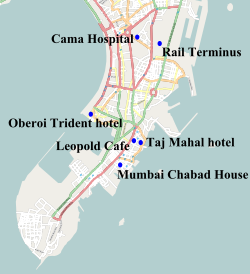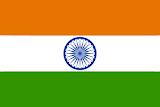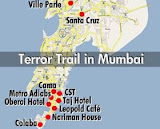Vijay Salaskar was killed in action by terrorists during the Mumbai attacks, on 26 November 2008.
India Express quotes statements by Constable Arun Jadhav, who was with the officers Vijay Salaskar, Ashok Kamte and Hemant Karkare when they died.[8] The three officers and four constables had received information that Sadanand Date had been wounded while resisting hostile terrorist action at the Cama and Albless Hospital for women and children. Currently located at Chhatrapati Shivaji Terminus (CST), a ten-minute drive from the hospital,[8] they took a Toyota Qualis and proceeded in that direction. Salaskar was driving, Ashok Kamte in the passenger seat, Hemant Karkare in the second row, and the four Constables, including Jadhav, were in the back row of seating. According to Jadhav, five minutes later two terrorists stepped out from behind a tree and opened fire with AK-47 automatic rifles. The six policemen, other than Jadhav, were all killed quickly in the gunfire. The wounded Jadhav had no opportunity to render assistance. The two terrorists approached the vehicle, dumped the bodies of the three officers on the road and, leaving the constables for dead, proceeded to Metro Junction. Upon arrival, they aimed three bursts of automatic fire at police and journalist vehicles drawn up at that location, then drove off towards the government offices (Vidhan Bhawan) in South Mumbai. Here again they fired several times. While attempting to leave the area, one of the tyres of the vehicle burst, so the terrorists departed to obtain another. At this point, Jadhav was able to contact headquarters. The bodies of the dead were promptly recovered and taken to St George Hospital.











